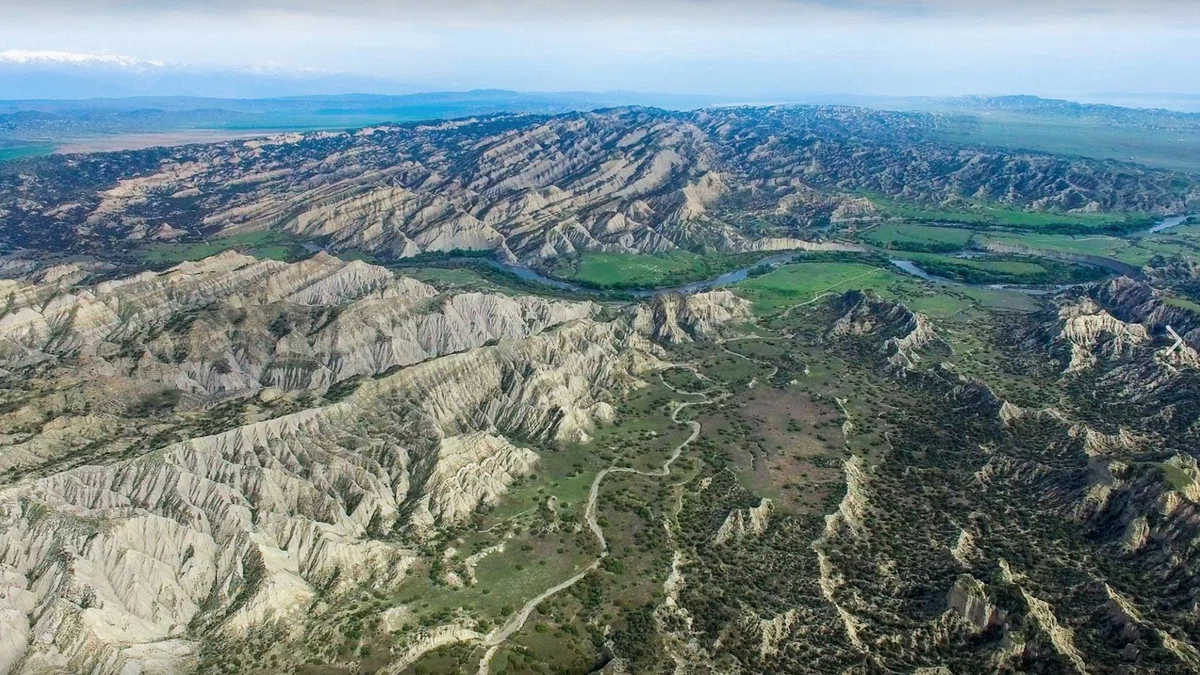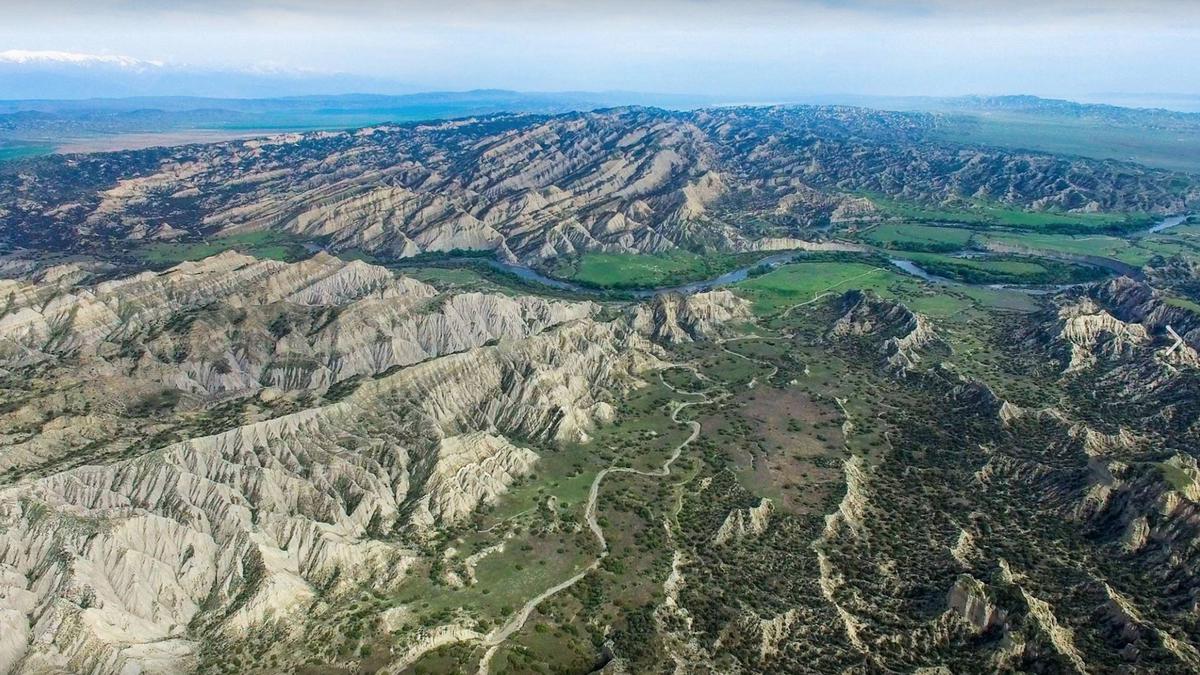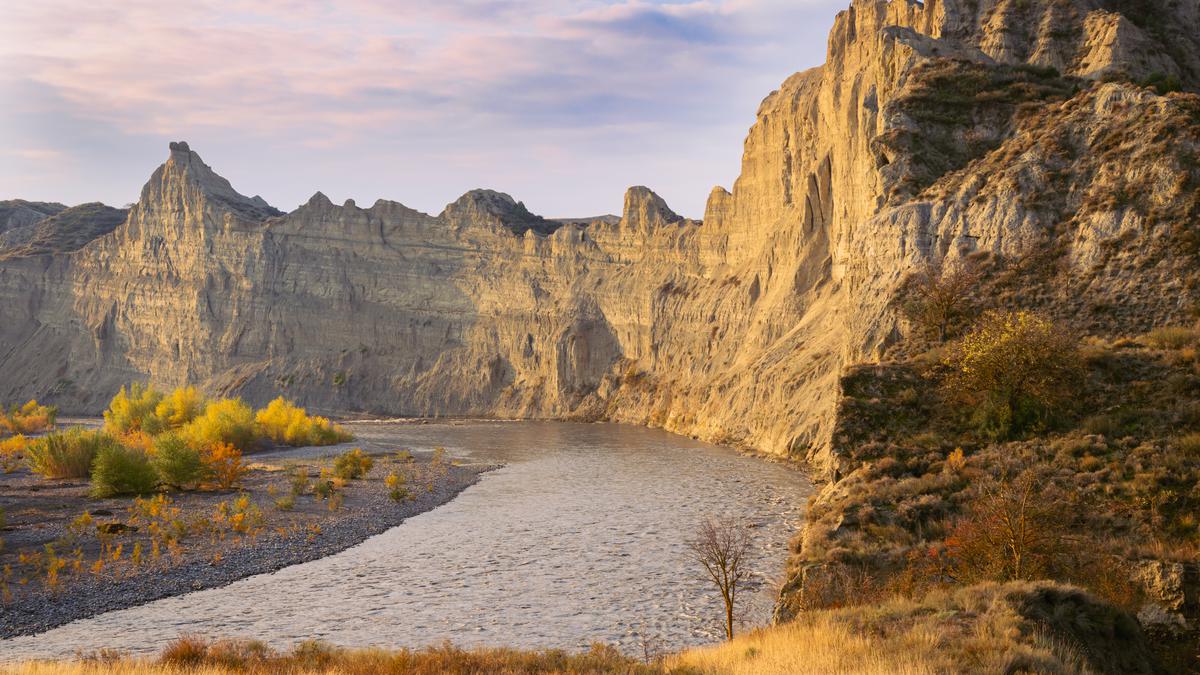
Nature conservation areas where tourists are allowed in Georgia. Nature conservation areas of Vashlovani.
The nature protection areas of Vashlovani attract attention by the fact that tourists are allowed here, who will be able to explore all the diversity of the nature of the area. The vegetation of this place is of a savanna type, so here you will find many unusual plants, some are listed in the Red Book. As for the fauna, there is a huge variety of birds.
The nature protection territories of Vashlovani are located in the southeastern part of Georgia, in the lowlands of the Sea latitude, between the Iori and Alazani rivers, 160 km away. from Tbilisi. The total area of these territories is 250 km2. This includes a nature reserve, a national park and three natural monuments.

The climate of the protected areas of Vashlovan is moderately humid subtropical, the amount of precipitation reaches 400 mm. Even the slightest changes in the exposure can cause a change in soil moisture, and eventually a modification of the entire landscape. Currently, the following landscapes are represented within the Vashlovan territories: semi-deserts and badlands, steppes and shiblyaks, arid woodlands and pine forests.
The flora of the Vashlovansky nature protection territories belongs to the savan type of plants. Here there are tipchak-kovyl steppes and frigans. Also in these places you can see a rather rare tree - pistachio tree (Pistacea mutica), common oak (Qurcus pedunculata), black poplar (Populous nigra) and gray poplar (Populus canescens), ash (Faxinus excelsior), pomegranate (Punica granatum), opex (Juglans regia).
There are several hundred species of plants in Vashlovani, among which it should be noted: 7 species of orchids, Iberian iris or Georgian iris (Iris Iberia), Eichler's tulip (Tulipa eichleri), forest grapes (Vitis sylvestris). The fauna on the territory is also diverse, especially a lot of birds. Migratory birds rest here. Among birds of prey, it should be noted such species as: burial eagle, vulture, bald vulture (Gyps fulvus), marsh harrier (Circus aeroginosus), common buzzard (Buteo buteo), Colchian pheasant (Phasianus colchicus) is often found in tugai forests. Thousands and thousands of swallows nest and form colonies on the Vashlovan bedlands. These places are called the city of swallows here.

The natural environment creates favorable conditions for reptiles. It is home to: Mediterranean turtle, Asian boa constrictor, four-lane skidder, snake, gyurza and many others. There are about 700 species of insects here, among which 1/7 of the total number of butterflies.
There are many animals in protected areas. Among them, the brown bear (Ursus arctos), rare for arid regions. At the end of 2003, a Near-Asian leopard or leopard (Panthera pardus ciscaucasica) was discovered here, which then became the symbol of Vashlovani. Gazelles -gazelles (Gazella subgutturosa subgutturosa) have recently been imported from neighboring territories, which in the recent past lived here in large numbers.
Anyone can explore the unique variety of nature conservation areas of Vashlovani. The tourist infrastructure is well developed here.












35 comments
Log in to leave a comment
1. Что касаемо змей – есть ли ядовитые?
2. Есть ли вероятность встретиться «лицом к лицу» с медведем или барсом? (Если честно не хотелось бы), а вот понаблюдать из безопасного места очень даже
P.S. информация о том что в этом месте обитает огромное количество бабочек наверное покажется просто адом людям которые страдают Лепидоптерофобией (боязнь бабочек)
P.P.S. Но для меня это просто рай)
А теперь придираться буду: режут глаз "перемены в экспозиции". В каком значении здесь применяется это слово, и как это понятие влияет на влажность почвы и ландшафт?
Такие слова и понятия: шибляк, аридные редколесья, типчаково-ковыльная степь, фригана,тугайный лес - мне - человеку, живущему далеко от Грузии в частности и субтропиков вообще - ничего не говорят. Хотелось бы чуть более подробного описания, и если используются специальные термины, их объяснения "для чайников". Автор, может, и эксперт в кустарниково-редколесно-степных переходных ландшафтах, а читатель - нет.
А вот за перечисление наиболее значимых видов флоры и фауны - спасибо! очень интересно!
Про "1/7 часть из всего количества бабочек" тоже непонятно. Вроде имелось в виду "из 700-та видов насекомых 1/7 часть - бабочки". Но, как говорит один мой знакомый, это не точно! :)))
И вопрос напоследок: куда делись джейраны, обитавшие здесь в большом количестве? Эмигрировали? Шутка. Мне действительно интересно.
"